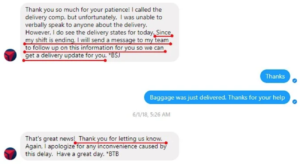With the recent lift of the nation-wide shut down, the country is slowly opening up on a state by state basis, but the majority of businesses still remain physically closed. Due to the uncertainty surrounding the situation, you may be considering, or have already entered into the e-commerce space.
There is an increasing number of people online and numbers will most likely continue to grow as the year goes on. In light of this growing audience, many businesses are boosting digital ad spend and their online presence in general. Making the e-commerce space even more crowded than before. This can be intimidating for those just getting started, which is why Onimod Global is here with helpful tips for getting your e-commerce marketing strategy started.
Step 1: Choose Your E-Commerce Software
There are endless e-commerce platforms out there to choose from. When you’re comparing software, it can be hard to tell how seemingly minor differences in features can have a major impact on overall performance, but they can. When it comes down to it, what’s best for you will depend on a variety of factors, such as the industry you’re in, the size of your inventory, etc. We’re going to talk about the three most popular e-commerce software platforms and give pros and cons to each, but there are many online articles that discuss others and go into greater detail on each.
BigCommerce: Ideal for larger retail brands. Also a good choice for those who have a brick and mortar store and are looking to expand operations. The interface is user-friendly and allows you to customize your shop without having to know code by using templates in design your store.
Pros:
- Excels with multi-channel selling
- User-friendly
- Scalable
- Variety of quality themes
- Comprehensive abandoned cart feature
Cons:
- Can get pricey
- No 1-click selling/up-sells
- Cart abandonment feature isn’t included in entry plan
Shopify: If you plan to drop ship, rely on Facebook Ads, or Instagram marketing, this may be the best choice. Two big downsides are weak SEO and rigid URL structure, meaning it’s not as user-friendly. You can change some sections of it, but not others.
Pros:
- Quick load time
- Easy set up
- Many certified partners
- 1-click selling
- Allow multiple channel and social selling
Cons:
- Poor SEO
- Unable to customize checkout process
- Apps can get costly
- A developer is needed for advanced features
3dcart: Has many practical features, such as unlimited storage, no transaction fees, and advanced shipping solutions. The main downside is it’s not for beginners. Set up and customization takes a lot of time to understand and get used to.
Pros:
- A nice blog feature
- Supports any integrations you would need
- Good business user management tools (email, QuickBooks, inventory_
Cons:
- Dated templates
- Lacks customer support
- Not beginner-friendly
Step 2: Optimize Your Site for Search and Mobile
Online shoppers are constantly bombarded with advertisements, promotions, product options, etc. This means when they do make it to a site, they’re not going to wait around for a slow performing site because they can easily go somewhere else. 46% of shoppers have said they’ll never return to a slow website. Going even further, Google reported that for every one second delay in page load time, conversions can fall up to 20%. While there can be many causes of a slow site, these are the most common:
- Heavy Page Image: Optimizing images will allow the pages on your website to receive bytes faster, and this makes your page more efficient with a faster load time.
- Large Files: We highly recommend a JavaScript compression or a minimization tool to help decrease your download size.
- Plug-Ins: Enabling caching with a plug-in allows pages on your site significantly faster. This saves you copies of pages with the same request, which allows your server load in a much more efficient manner.
It may be beneficial to get a professional digital audit done to identify any areas your site might be lacking and to get help with finding the right solution.
Step 3: Identify Your Niche
E-commerce sites with hundreds of products, dozens of categories, and no real focus rarely find success, at least not when they’re just starting out. Unless you have a massive budget, you have to find a niche to be profitable. Choosing your niche is one of, if not the most important step of starting your online store. You can start this process by researching different niches and identifying successful companies in that space. You don’t want to pick an overly crowded area, but you don’t want to pick a space with no competition either. This can indicate there’s no market there. The more specific you get, the less competition you’re likely to face and also gives the benefit of having shoulder niches. These are spaces that are similar to you, but not identical. This gives you the opportunity to work with other businesses in those niches to cross-promote, become an affiliate, and grow your customer base.
Step 4: Utilize Social and Content Marketing
As we mentioned before, people are online now more than ever. Not only are they shopping, but they’re also spending time on social platforms. If you haven’t read last week’s blog, we go into greater detail on social media strategy, but for now we’ll just go over some general tips:
- Not every social network is the right one. E-commerce sites are highly visual, so choose social platforms that are image focused and give you the opportunity to show off your products, such as Instagram and Facebook.
- Be helpful. Give customers credible, detailed information about the things they need. Make it clear you’re there to help them.
- Be active. It’s important to let customers know solutions are available whenever, wherever, even if that means in the late evening or early morning.
As far as content marketing goes, some might think it’s not needed if you’re just selling products online. Actually, content is extremely valuable for e-commerce sites. Content is one of the number one contributions of SEO, and when your business is strictly digital, SEO is essential. Here are some tips for using content to market your store:
- Write relevant blogs.
- Create guest posts for external websites.
- Publish product-related videos on YouTube.
- Include a keyword-driven FAQ section.
- Optimize product page copy.
Final Thoughts
Even if you’re only shifting to e-commerce due to the pandemic, it can have great benefits for your overall business long after it’s over. E-commerce businesses have several marketing tools at their disposal. Using digital and inbound marketing just the right way, you can create campaigns that are designed to help your online store attract customers and grow better.
If you find yourself struggling with marketing in any area, you may want to consider outsourcing for your digital marketing needs. At Onimod Global we are experts in everything from SEM, social media marketing, Google shopping advertising, and more.
Learn more about what we do, take a look at how we’ve helped other brands, and become a client today!



